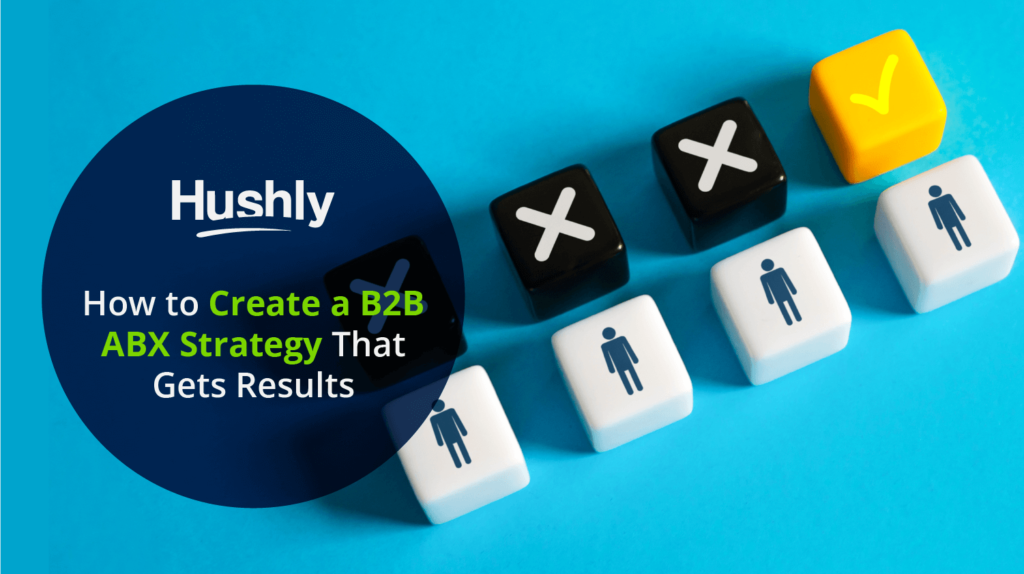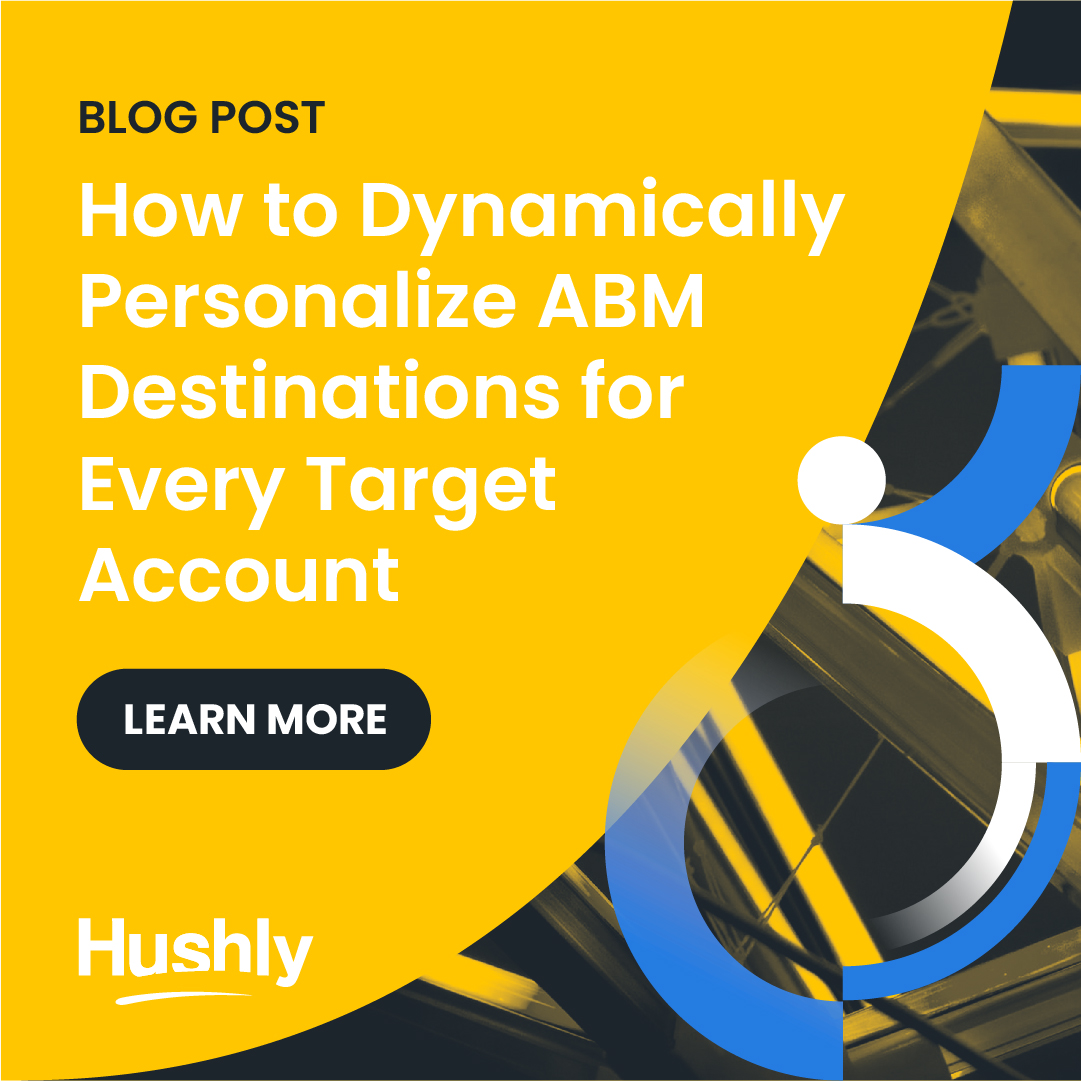The best customers are those that keep coming back over and over again. They spend the most money on your best products, know you on a first-name basis, and are committed to mutual growth.
Forming relationships like these is only possible through dedication to the customer experience. On the front end, account-based marketing tactics will help you communicate your vision to these customers and convince them why you’re the best solution for their money.
However, account-based marketing stops when the customer is no longer a prospect. Once they’ve reached the point of actually forming the relationship, you’ll need new tactics to keep them around for a long time and continue to sell your vision to them for years to come.
For this, we recommend creating a B2B ABX strategy that will bring your sales and customer service operations into the mix and ensure you always treat these customers with the utmost importance.

What is ABX Marketing?
ABX stands for account-based experience. It’s an extension of the popular idea of account-based marketing.
As the name ‘account-based’ suggests, each strategy is predicated on the idea that each buyer and company you do business with is unique. By acknowledging and catering to these unique qualities, you’ll be better equipped to build long-lasting relationships and deep trust.
ABX vs. ABM
ABM is the predecessor to ABX. It stands in contrast to ABX in a few key ways:
- ABM stands for account-based marketing. It’s a marketing technique, first and foremost, meaning it doesn’t focus on anything that happens once the marketing is complete. This excludes both sales and customer service.
- ABX is a holistic extension of ABM. It includes ABM, but seeks to tailor the entire customer experience.
- ABX includes everything from the website experience, checkout process, content engagement, and customer service.
- While ABM is suitable for bringing in large customers, ABX should be your focus for holding onto those customers.
What Does ABX Consist Of?
ABX should be crafted using:
- Data: you need to know who your best customers are and what it will take to keep them.
- Tools: you shouldn’t try to carve marble with your hands. Invest in proper tools for the job.
- Authentic Relationships: Buyers are people. You should treat them as individuals with unique needs, goals, and visions for their companies.
- Goals: What does success look like? Determine this early, so you always know what you’re aiming at.
When is ABX ROI the Most Valuable?
Holding onto existing customers is often more valuable than acquiring new ones. Because of this, you’ll see the greatest returns on ABX when your company is struggling to hold onto those big accounts you worked so hard to get in the first place.
This is probably happening because your ABM was effective. You communicated your message and promised the relationship-building that appealed to your largest customers. However, if you find that you aren’t holding onto them as well as you’d like to, there’s probably a drop-off in experience at the back end.
From a customer’s standpoint, there is no worse feeling than paying a company money only to see them slip away and stop offering such personalized service.
Surely you’re not doing it on purpose. However, to right this problem, you’ll need to invest in some ABX tactics.
How to Get Started Creating Valuable B2B ABX Strategies
Start with a buyer persona. This will allow you to visualize your ideal customer. You can then practice creating an experience that best appeals to that B2B buyer.
1. Pick Your Most Valuable Customers
ABX is a costly and time-consuming investment, so you’ll want to save it for only your most valuable customers.
You can determine this using any metric you like. Just make sure everyone involved agrees on these few clients.
2. Assign Accountability
Ensure all stakeholders are present when accountability is decided. Ultimately, it’s the customer experience you’re seeking to maximize here. This means marketing, sales, and customer service must be aligned. If someone feels left out of the decision-making process, that’s already a gaping hole that must be repaired.
3. Manage the Program Through a CRM Platform
Tracking the customer experience takes work. It will require capturing and analyzing a lot of data right from the get-go. Every contact with the customer should be documented, including small details like how long the conversation lasted, who it was with, and what they spoke about.
Beyond this, you’ll want to keep track of the customer even when they aren’t in contact with you. This includes whenever the customer browses your website for answers or turns to your resource page for instructions on using your product.
A dedicated CRM platform can help you keep track of all of this information automatically.
4. Start with a Soft-Launch
After building out your buyer persona profile and going through the motions of your new ABX, you can begin using it on select customers.
There will be growing pains—best to prepare for them in advance. Start with a soft launch, or beta test, that only includes a few select clients. Calling it a beta test will take the pressure off your teams and decision-makers to get everything right the first time.
Plan to ensure that all your beta-tested clients won’t experience any disruption or downgrade in service while you’re testing.
5. Focus on Personalized and Relevant Engagement
You want to ensure that anytime you’re reaching out to customers or prospects, it’s with relevant information. Marketing executives get too many emails to read them all. Those emails with irrelevant subject lines will quickly be dismissed as noise.
A key feature of ABX will be your ability to design relevant and personalized engagement. You need to know the following:
- Where the buyer is on their journey.
- What content they’ve already consumed.
- What products they’re interested in, if any.
- How best to speak to this individual.
- How best to reach them.
If you can master these five elements of personalized engagement, you’ll be well on your way to crafting valuable ABX strategies that get results.
6. Measure and Reiterate
Lastly, any good marketing program requires analytics and updates. You need to know what’s working and what isn’t so you can make quick adjustments and keep the marketing content flowing.
Ensure your accountability leaders understand the metrics they’ll be judged on, and ensure there’s a plan to bring those metrics up to par whenever necessary.
Don’t assume your first plan will be perfect. The best ABX strategies are molded over time with trial and error. Be flexible, open-minded, and reactive, and you’ll have success.
Create Better ABX With Hushly
Hushly’s platform is perfect for creating excellent ABX for your diverse range of clients.
Our account and visitor analytics can help you keep track of:
- Visitor demographics and activity
- Analytics by groups of accounts, activity stage, and individual buyers
- Score account and visitor engagements
- Content performance insights
Hushly’s digital content marketing expertise is also here to help you create the best and most engaging website experiences so that every customer you draw to your website receives a unique and relevant experience.
Find out more about how Hushly can help you create ABX strategies that get results.



